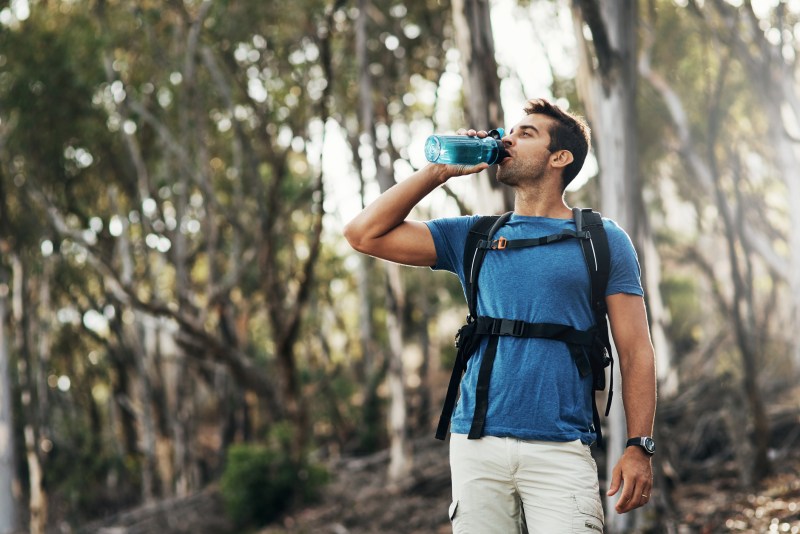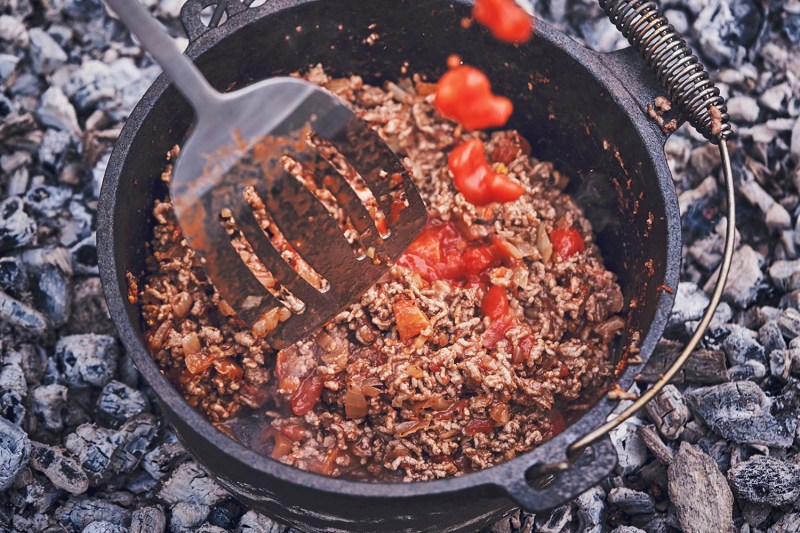In the U.S., about 600,000 hikers get lost in the woods every year, which is why I never venture into the outdoors without the proper permits, tools, and safety precautions. While I have been fortunate enough to never find myself in an extreme emergency situation, getting lost in the woods is a possible reality, even at our well-maintained national parks. If you’ve ever wondered how long can you go without food while lost in the wilderness, here’s what you need to know.
How long can you go without food?

Due to ethical concerns, food deprivation beyond intermittent fasting hasn’t been studied, but scientists from Medical News Today estimate that a person could probably survive between one or two months without food depending on several factors like hydration, age, and heath. How long you can go without food might vary, and it’s going to take some math.
First, assess your energy reserves. Each point of fat provides about 3,500 calories, so a person with 20 pounds of body fat has about 70,000 calories stored. Then, estimate your Basal Metabolic Rate (BMR). This can be done through formulas or through a BMR calculator. Formulas can vary, so it’s important to note that this is just an estimation.
- Men: BMR=10×weight (kg)+6.25×height (cm)−5×age (years)+5
- Women: BMR=10×weight (kg)+6.25×height (cm)−5×age (years)−161
Then, calculate your energy depletion rate:
- Total calories /calories burned per day = survival time in days
The impact of hydration on your survival time

The most important factor in your survival will be your hydration. The average person can survive just three days without water, so finding a clean water source is going to be your biggest concern. While you do this, don’t overexert yourself. Excessive sweating can speed up the symptoms of dehydration, which won’t work in your favor.
Look for natural sources like streams, rivers, and creeks where the water is flowing colorless and odorless. Don’t try to drink murky or stagnant water, because that may contain more contaminants. If you have any tarps or buckets, collecting rainwater is usually safe. One of my best tricks is to keep an eye out for areas where the animals drink. Just remember to check out the area thoroughly, because you don’t want to be drinking near animal poop.
If you’ve packed a water purification bottle, you’ll be in good shape from here. However, for those who don’t have one, it’s always a good idea to boil your water for at least 10 minutes before drinking it.
Once you’ve found your clean water source, camp in a high place where there’s no risk of flooding. It’s always better to drink small sips of water consistently than to let yourself get too dehydrated, but in terms of food, ration what you have carefully. You can supplement your meals with foraged food if you know what to look for, so it’s a great idea to study up on your edible plants before you make it out into the wild.
How to ration your food wisely

First, inventory your supplies and estimate how long you can make it last. If you brought any perishable food with you, like apples or bananas, you’ll want to eat those first before they go bad. Save your nonperishables like crackers, nuts, and granola bars for later. If you can store everything well, pre-divide your daily rations and eat small amounts throughout the day to avoid feeling overly hungry. Make sure you’re eating every part of your food that’s safe.
Next, reduce your physical exertion to light activity. This is an important step because it lowers your calorie needs. The average survival calorie intake is about 1,000 to 1,5000 calories per day, but you may need less depending on how prepared you are.
That said, it’s always a good idea to increase your food supply. You can do this by setting traps for small game, fishing at your water source, and foraging safely for some productive, low-exertion activities.
When you’re out foraging, mark a clear trail so you can get back to camp and avoid straying too far. There are many edible plants in the forest, but one wrong mouthful could get you in trouble. Only eat plants you can 100% verify are safe. One of my personal favorites is dandelion leaves! Most people can easily recognize these sunny weeds by the yellow flowers, and there isn’t a toxic look-alike, so you don’t need to worry about misidentification. While the leaves taste a bit bitter, they can be a great addition to your food supply and give you some much-needed vitamins.
Above all, prioritize your health and safety. The best way to extend your survival time (or even prevent getting lost in the first place) is to be prepared. Whenever you hike, the National Park Service recommends bringing 10 essentials with you:
- Map and compass or GPS
- Sun protection
- Warm clothing
- Flashlights
- First-aid kit
- Emergency fire kit
- Basic repair tools, such as a knife, duct tape, and scissors
- Emergency shelter
- High-calorie food
- Drinking water
If you’ve let a friend or family member know when to expect you back, hopefully, you won’t have to wait too many days for Search and Rescue to find you. But if you do find yourself in a place where you need to extend your survival time, it’s better to stay put than to venture too far. Only 23% of lost hikers find their way out, and those are odds I don’t want to mess with.




